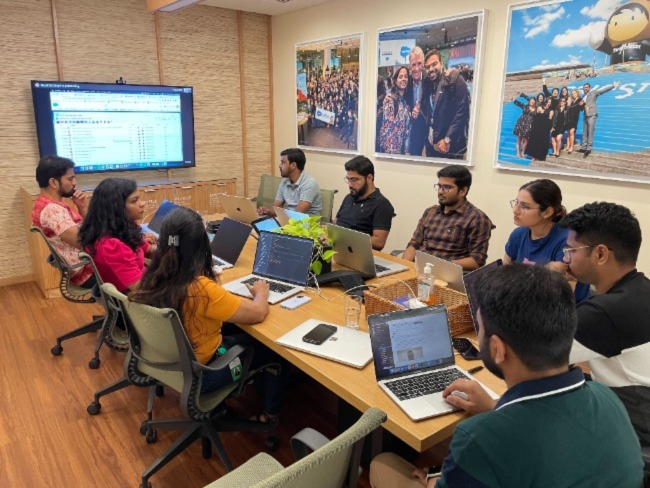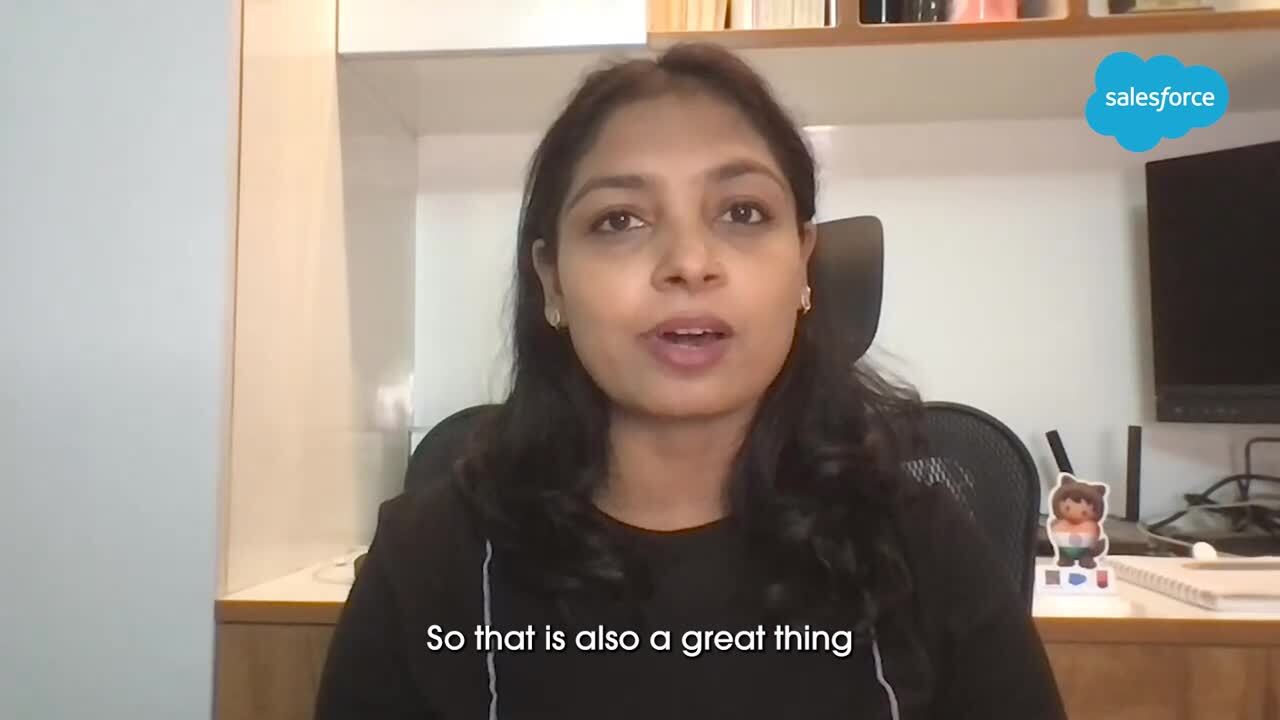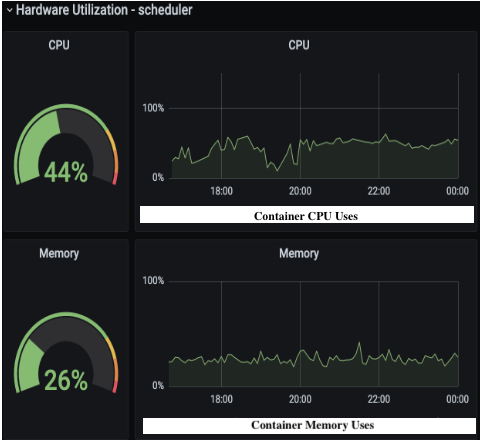
Written by Archana Kumari and Scott Nyberg.
In our “Engineering Energizers” Q&A series, we examine the life experiences and career paths that have shaped Salesforce engineering leaders. Meet Archana Kumari, one of Salesforce’s first India-based woman engineering leaders. In her role, Archana leads Salesforce India’s Data Cloud big data processing compute layer team — charged with providing the tremendous processing power that supports 6.3 million Data Cloud-related tasks per month (and growing).
What would people be surprised to learn about your team in India?
I lead a team of problem solvers, who happen to be engineers. No matter the assignment, they are very passionate about solving problems and always perform at a very high level. For example, about a year and a half ago, they tackled a highly complex big data processing task, charged to orchestrate the migration of nearly 50 terabytes customer data from Salesforce Datoroma to Salesforce Data Cloud’s data lake — a storage layer that houses customer data. This is the bottom-most layer of Data Cloud, a next-generation platform that harmonizes customer data in real time.
The data migration effort was key to Data Cloud’s launch success — ensuring every customer component transferred over and functioned properly following the move. To achieve this, the team built a robust, resilient and performant big data processing compute system, in concert with understanding the whole ecosystem and coordinating across more than 20 teams — catering to different use cases, resolving ambiguities and keeping everyone on the same page.
Operating under a strict deadline, the team only had a few months to build the migration orchestration which could facilitate data migration. That proved difficult because the team had no prior experience in big data processing and had just joined Salesforce.
By selecting the correct compute and choosing the optimum orchestration tool that supported data migration at massive scale, the team radically reduced their learning curve and produced results much faster than anyone anticipated. So, they are very special engineers.
The team currently remains laser-focused on managing Data Cloud’s tier-zero layer, also known as a compute layer, that provides the necessary on-demand big data capabilities and infrastructures to address various compute needs of internal Salesforce Data Cloud teams. This involves data ingestion, processing, massaging, and interpretation — enabling information to be segmented and activated for our customers. This layer is the heart of Data Cloud.

The compute layer team is responsible for multiple big data processing tasks, ranging from connection to activation.
How would you describe the engineering culture in India at Salesforce?
Our culture really embraces diversity and our value of equality. During my days being a developer at previous companies, I always wanted to work in a diverse environment, which was missing.
It is different at Salesforce. My team has great gender diversity — 40% of our teammates are women. And as an interesting aside, I was one of the first female senior engineering managers hired in India.
My team spans regions across India — each with its own unique culture. We respect everyone’s traditions, which creates a sense of belongingness where we are all part of the same family and stand up for each other.
Additionally, everyone is equally empowered to express their diverse opinion without a fear of being judged. People come from diverse backgrounds, which delivers different perspectives, thoughts, ideas, and creative inputs. Our team understands this well, respects every individual, and makes them feel included.

What have you learned about leadership since joining Salesforce?
At my previous company, as a leader, I provided solutions to team members who struggled. Here at Salesforce, I have learned to pivot, refraining from simply giving a solution. Instead, I enable and motivate my team to solve their own problems — reporting their outcome to me afterwards.
What does this discussion look like? When employees feel challenged, I ask them to define their problem together with their proposed solution. Sometimes the issue requires more discussion, so I will ask them a series of questions that are designed to help them better visualize the issue at hand.
While high-performing seasoned professionals require far less direction, less experienced employees may get stuck during our Q&A session, where I offer them hints to help them arrive at a solution.
Archana shares the top engineering challenges that keep her up at night.
What about your job motivates you the most?
It gives me an immense sense of happiness to motivate and enable others. I think I have correctly set the vision and the purpose for my team and we are seeing the results.

Archana explains how Salesforce inspires her.
Also, everyone is unique and has a lot of potential. How do I nurture them to reach their potential? Watching them grow so much — in just one and a half years since our team’s inception — gives me great satisfaction.
Additionally, there are many challenges to solve and those unknowns are really exciting because every step matters and every step uncovers something new. And that is how you connect the dots. So, working with ambiguity is my favorite thing nowadays. When you know everything there is no fun. Learning and adapting to solve problems — that is where the fun starts.
Learn more
- To learn how Salesforce India’s big data processing compute layer team migrated terabytes of data and swiftly processes petabytes of customer data, read this blog.
- Check out our Technology and Product teams to learn how you can get involved.
- Stay connected – join our Talent Community!






